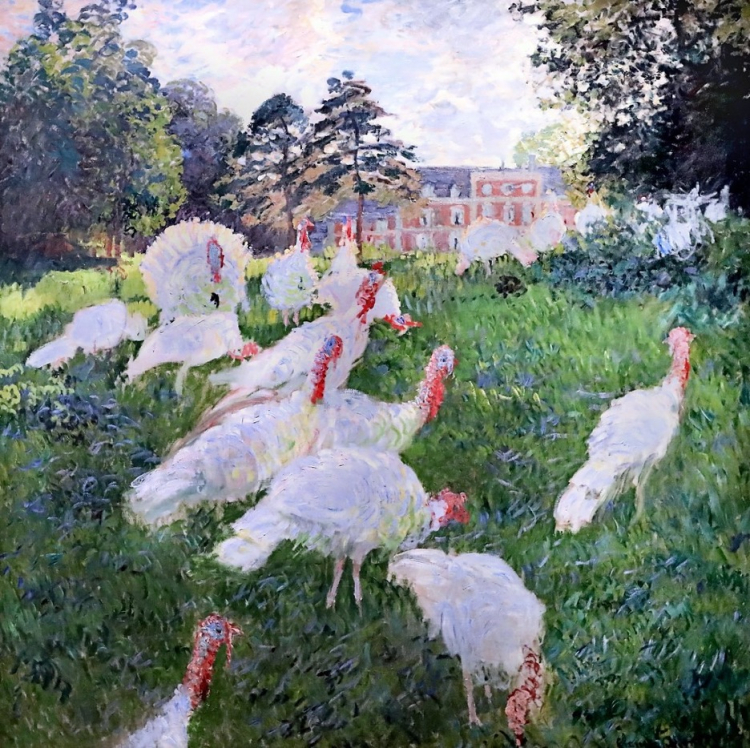Plymouth Meets Paris

Americans in Paris are likely beginning to crave the traditions of home and the comforts of their favourite holiday dish around this time. That’s because the fourth Thursday of November isn’t just another fall day. It’s the beginning of the holiday season. It’s the nostalgia filled four-day weekend, when schools and the offices of the non-essential close, allowing time for the annual pilgrimage (filled with excitement or dread) to a relative’s home. The fourth Thursday of November marks the celebration of Thanksgiving, a federal holiday that encompasses many shared customs in American households, observing history, food and gratitude. There are enough Thanksgiving traditions to go around, and ways for our curious international comrades to get a piece of what the holiday has to offer.
Where do Americans begin when explaining the significance of Thanksgiving to our French friends? From the beginning, of course. This American holiday takes on many meanings, but Thanksgiving is nothing without its history.
During the 17th century, a small ship called the Mayflower set sail from Plymouth, England carrying disease and British colonists known as Pilgrims and anchored on the shores of Massachusetts. Bringing us to the Thanksgiving myth, often confused as history, of the first Thanksgiving. The myth tells the story of the local Native Americans, the Wampanoag tribe, welcoming the Pilgrims and graciously inviting them to a celebratory harvest feast. This narrative omits the facts that the arrival of Pilgrims brought irreparable consequences like the exploitation of resources, death from disease and genocide, land theft, as well as trauma that affects generations of Native Americans.
The truth behind Thanksgiving is not a story about giving, but a story of taking. Another example of the history of colonialism in America being whitewashed and crafted into a tale of triumph and togetherness to be shared in primary school classrooms throughout the States. It is rare to find an American child who didn’t partake in an elementary school production of the first feast of Thanksgiving, dressed up in costumes of pilgrims and the problematic appropriations of Native Americans. Many Native Americans don’t celebrate Thanksgiving, observing a National Day of Mourning as a counter-commemoration. Thanksgiving is a celebration based on historical events, and the harsh reality of its origins should not be forgotten just because it may ruin our appetite.
A significant part of Thanksgiving, known as Turkey Day by those who associate the holiday with its traditional spread, is the feast. The original Thanksgiving feast was a celebration of the first harvest, so the offerings of that cornucopia are reflected in the dish's seasonal ingredients like cranberries, corn, potatoes, and pumpkins. The day long preparation is notorious and the pay-off is legendary, everyone’s contributions create a collaborative banquet. The menu may feature classic showstoppers such as the roasted turkey, stuffing and pumpkin pie, or beloved dishes like Mac & cheese and candied yams. Some prefer to pardon the turkey; others can’t wait to make the leftovers into a sandwich. The grub is up to the gobblers.
When our international friends think of Thanksgiving, images like Norman Rockwell's painting “Freedom from Want”, an iconic portrayal of the American holiday meal, may come to mind. People may think that this Rockwell piece earned its alternative title “The Thanksgiving Picture” because of the turkey being served on a silver platter front and centre of the scene. I would argue that it is the shared smiles of anticipation or cheerful conversation amongst those around the table that resonates the most with the holiday, not what's being served. More important than the food is the people you share it with.
“Freedom from Want” By Norman Rockwell. Image Credit: WikimediaFor some, the Thanksgiving table is seen as a battleground. The place where distant relatives share their controversial takes on politics or someone's love life, making for exhausting discussions and a bitter aftertaste. This does not have to be the case. Like the holiday menu, it is important to curate a guest list of loved ones, relatives, friends, and/or chosen family whose company is enjoyed. Thanksgiving can be a time and space for connection and gratitude, where thanks is best served warm and in heaps.
Stuffed with traditions, Thanksgiving offers Americans the opportunity to pick which to keep and which to leave behind, no matter where the celebration is taking place. Be generous when sharing with those who want a taste of the American holiday’s abundance of customs. Drag friends on your own 5K Turkey Trot along the Seine. Feast your eyes on the floats and balloons in the Macy’s Thanksgiving Day Parade livestream. Be amazed by the beauty and grace of the canines competing in the National Dog Show. Play touch football or sit in an armchair with the football game blaring on the television. Get crafty by making a hand turkey. Sit around a table, enjoying lively discussion and each other's company. Ask people what they are thankful for. Express gratitude.
If given the opportunity to share Thanksgiving with the French, Americans may choose to serve up the history of its origins or carve up the holiday’s iconic plat du jour but dishing out thanks is non-negotiable. Thanksgiving can easily be packaged as a day about colonialism and consumption, and rightly so, but it is important to share the ways the holiday’s sentiment has evolved. It is a day when people come together to participate in meaningful festivities new and old. A chance to reflect on the gratitude they’ve harvested during the year.








